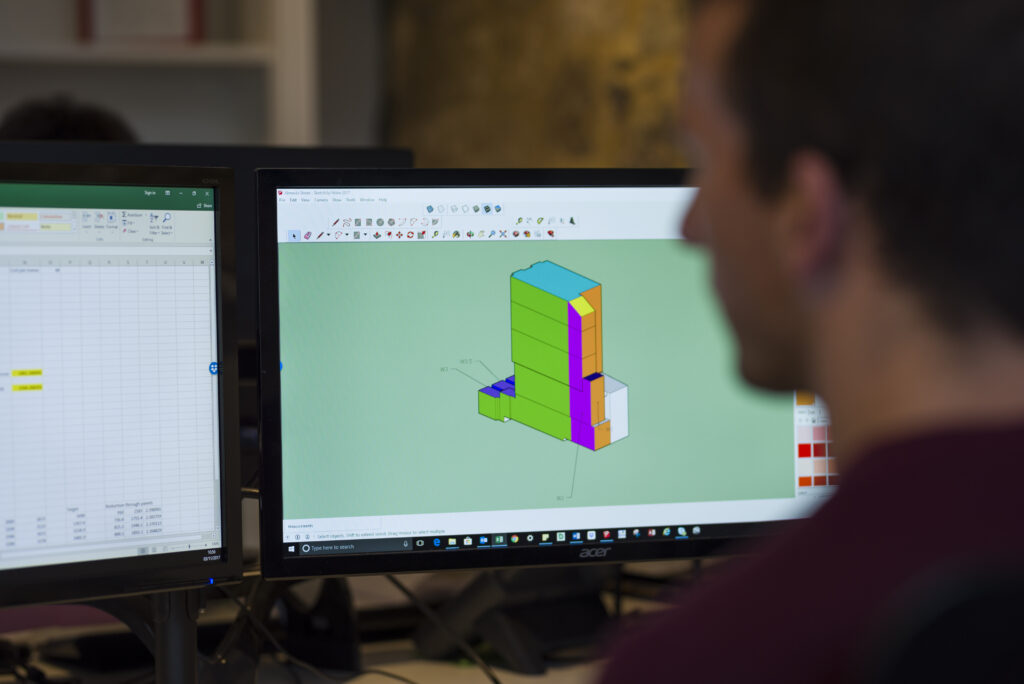The Primary Energy Rating (PER for short) comes into effect with the new regulations launch this June.
For dwellings, the PER joins the former CO2 based emissions target (DER/TER) as the primary method of rating a buildings performance – this is assessed within SAP Calculations. The PER will also apply to non domestic buildings within SBEM calculations.
Residential buildings will now be assessed against 3 criteria:
- PER in kWhPE/m² – Primary Energy Rating. This is an indicator of energy use which is influenced by both fabric and fuel
- TER in kgCO2/m²/year – Target Energy Rating. This is the old carbon target and is influenced by both fabric and fuel
- TFEE in kWh/m²/year – Target Fabric Energy Efficiency. This is the existing target influenced by fabric only
What is a PER?

The PER has been designed to give a fuller picture of a building’s performance and move the regs towards promoting lower energy demand buildings first and foremost.
It will take into account the fuel sources for heating and the environmental impact each fuel generation method has, for instance harvesting of biofuels, transportation of minerals and efficiency of power plants.
The Primary Energy Rating will be generated by giving each form of fuel a Primary Energy Factor, applying this to the building’s energy demand. Where Renewables are used, these will be subtracted from the final energy demand before the PER is calculated. Below are a few examples of how this may look for a typical dwelling:
Dwelling A
- 90% efficient gas boiler
- Heating demand of 10,000 kWh
- Primary Energy factor of gas is 1.13 kWh/kWh
(10,000 kWh / 0.90 efficiency) multiplied by 1.13 PE factor = 12,556 kWh demand
Dwelling B
- 300% efficient electric heat pump
- Heating demand of 10,000 kWh
- Primary Energy factor of electricity is 1.501 kWh/kWh
(10,000 kWh / 3.00 efficiency) multiplied by 1.501 PE factor = 5,003 kWh demand
Dwelling C
- 100% efficient electric panel heaters
- Heating demand of 10,000 kWh
- Primary Energy factor of electricity is 1.501 kWh/kWh
(10,000 kWh / 1.00 efficiency) multiplied by 1.501 PE factor = 15,010 kWh demand
Dwelling D
- 100% efficient electric panel heaters
- Heating demand of 10,000 kWh
- Primary Energy factor of electricity is 1.501 kWh/kWh
Addition of PV producing 2,500 kWh of electricity (1,500 kWh used within the dwelling, 1,000 kWh exported to the grid)
(10,000 kWh – 1,500 kWh / 1.00 efficiency) multiplied by 1.501 PE factor) minus (1,000 kWh x 0.501 PE factor to grid) = 12,759 kWh minus 501 kWh = 12,258 kWh demand
How will the PER affect my projects?
Taking this all into account, you may be wondering how this will affect your upcoming projects. The main points we can take, from what we know so far is:
- The Target PER is a realistic view of all of the energy required to run a home – not just the mains fuel we think is needed
- The energy demand of a property needs to be counteracted with a high efficiency system
- The Target PER is not a measure of heat loss but the total energy demand of a property
- The efficiency of the heating system being used is a decisive factor in determining the energy demand of a home (see examples above)
- A combination of exceeding the target CO2 emission rate, target fabric energy efficiency and the target primary energy rating is needed to comply with Part L
- It’s more important than ever to build efficiently and use renewable energy sources such as heat pumps and PV.
As always Build Energy will be here to guide you through the new regulations and support you in delivering the best solution for your projects.
Would you like to discuss your project?
Call us on 0330 055 34 05 or email be@buildenergy.co.uk.
